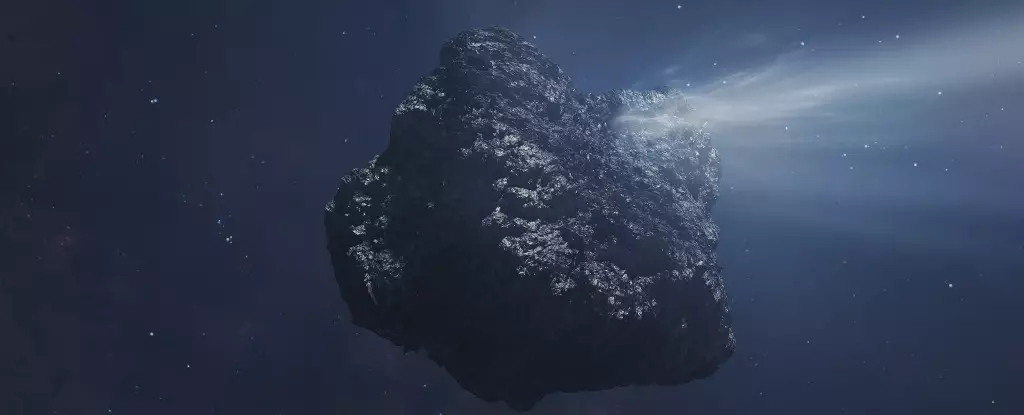In the vast expanse of our Solar System, a behemoth lurks—one that has garnered an unsettling yet fascinating spotlight among astronomers and enthusiasts alike. Comet C/2014 UN271, affectionately dubbed Bernardinelli-Bernstein, is an unmissable spectacle, not merely for its sheer size but also due to the intriguing dynamics it exhibits as it courses through space. At a staggering 137 kilometers wide, this colossal comet dwarfs the asteroid thought to have triggered the extinction of the dinosaurs by nearly fourteen-fold. The implications of its approach, however, are equally profound and provoke serious contemplation on humanity’s relationship with celestial phenomena.
A New Kind of Threat
While the high-speed traversal of this massive icy body is not projected to pose an immediate threat—peaking its closest approach to Earth at the orbit of Saturn by January 29, 2031—the psychological impact of its existence is hard to ignore. Are we prepared for a cosmic colossus that reminds us of our ultimate insignificance in a universe governed by forces far more powerful than our petty grievances? This phenomenon compels us to examine how we view catastrophic events and their ability to reshape not just landscapes, but ideologies and priorities on Earth.
Critically, while scientists like Nathan Roth of American University have outlined potential jumps in knowledge from studying comet UN271—an exploration into the “explosive outgassing patterns” and the enigmatic processes that govern comets—I see a more profound ethical question emerging. What are we risking by allowing ourselves to focus solely on the scientific valuation of such heavenly bodies, while neglecting the broader implications for society? An opportunity presented is being transformed into what may turn into mere spectacle, all while we have our heads turned skyward.
Active Monitoring: The Scientific Vigil
In an era where technology intertwines seamlessly with scientific inquiry, the use of brilliant observatories like the Atacama Large Millimeter/submillimeter Array (ALMA) provides exciting insights into UN271’s molecular dynamics. The detection of jets of carbon monoxide blasting from its surface and the initial formation of a coma, or gas envelope, around the comet marks significant milestones. Yet, there is a tipping point between role of the scientist as observer and as responsible interlocutor in celestial interactions.
Observing this comet from such great distances—at 16 times the distance between the Earth and the Sun—is a feat that underscores both human ingenuity and our often-complacent attitude towards cosmic threats. If we can witness this, what else lurks far out of sight that we have not yet cataloged? The complacency of believing the biggest risks are those closest to us becomes glaringly evident in a cosmic context. Wouldn’t it be prudent to channel some of our scientific marvel into preparing for unforeseen cosmic events that may never make headlines but could have staggering consequences?
Emotional Resonance in the Age of Science
The exhilarating dance between wonder and dread raises questions that go beyond the empirical realm. Are we becoming desensitized not only to our planetary fragility but also to our collective capacity for response? For instance, the magnificence of UN271 might lead to public fascination with astrobiology, yet this could be fleeting. People often forget that the air they breathe and the ground beneath their feet are as much a part of the cosmos as a distant comet. While UN271 remains a passive traveler through our skies, humanity remains entangled in grievances and distractions that seem to eclipse such weighty considerations.
As we turn our gaze skyward, internal reflection becomes imperative. The wonder of UN271’s passage needs to be recontextualized: that it can serve as a catalyst for a stronger discourse on global responsibility, environmental stewardship, and how we accept the wake-up calls of the universe. As we witness this colossal entity, it becomes our responsibility to direct that gaze inward, asking ourselves how we choose to respond in a world that feels increasingly divided and fragile. The alignment of stars and comets serves to remind us—are we ready to make sense of the larger cosmic threads that bind us all, or will we continue to chase ephemeral distractions?


Leave a Reply